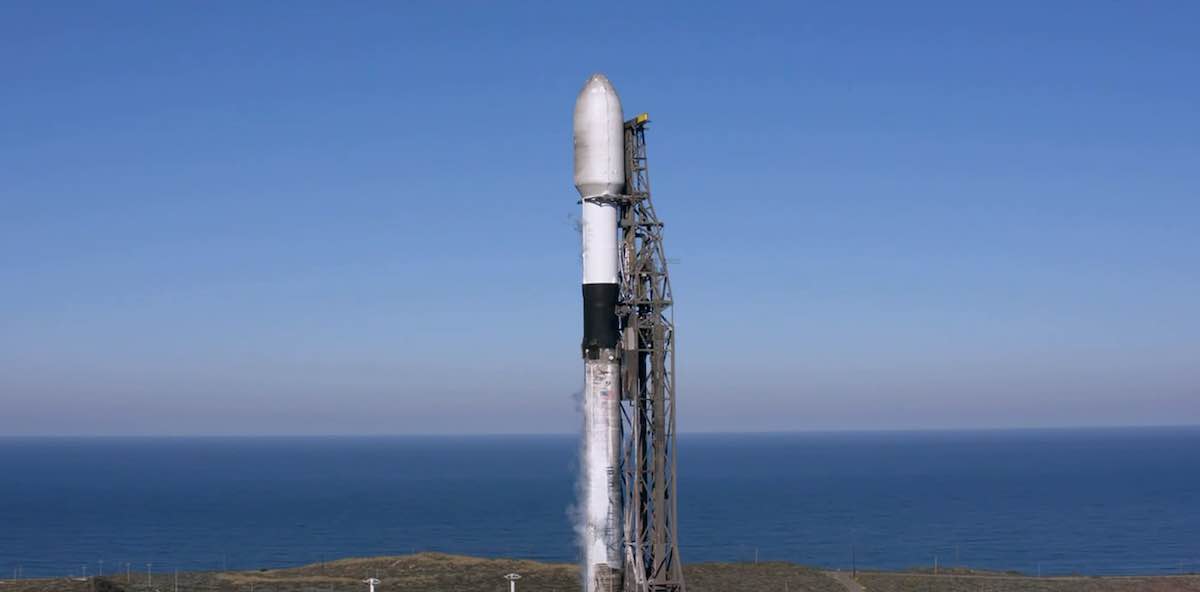SpaceX is set to launch another batch of Starlink satellites into low Earth orbit from Vandenberg Space Force Base on Tuesday night. This mission, dubbed Starlink 17-8, marks the debut of a new Falcon 9 rocket booster. The launch will carry 24 Starlink V2 Mini satellites, adding to the already vast constellation of over 1,900 satellites launched by SpaceX in 2025.
This event is significant as it highlights SpaceX’s commitment to rapid launch cadence and the reusability of rocket parts. The company is working towards certifying its boosters for up to 40 flights each, a key factor in reducing the cost of space access. Live coverage will be available 30 minutes prior to liftoff.
Here’s what you need to know about the upcoming launch:
- The launch features a new Falcon 9 booster.
- It will carry 24 Starlink V2 Mini satellites.
- SpaceX aims to achieve 170 launches this year through reusability.
Falcon 9 Launch Details
The launch is targeted for 8:51 p.m. PDT (11:51 p.m. EDT / 0351 UTC) from Space Launch Complex 4 East at Vandenberg Space Force Base. The Falcon 9 rocket will follow a southerly trajectory, placing the satellites into a polar orbit. SpaceX will attempt to land the new booster on the drone ship ‘Of Course I Still Love You.’ A successful landing would be the 148th landing on OCISLY and the 498th booster landing to date.
“Reusability has fueled the growth for human spaceflight, for commercial launch and for government launch. And it’s also made a more reliable system,” said Kiko Dontchev, SpaceX’s vice president of Launch.
The mission underscores SpaceX’s focus on reusability to achieve a high launch rate and reduce costs. This approach has allowed SpaceX to aim for an ambitious 170 launches this year.
Starlink V2 Mini Satellites
The Starlink 17-8 mission will deploy 24 Starlink V2 Mini satellites. These satellites are part of SpaceX’s ongoing efforts to expand its broadband internet service and direct-to-cell capabilities. Of the satellites launched this year, over 1,600 support broadband internet, and nearly 300 are direct-to-cell satellites.
SpaceX continues to innovate in satellite technology, providing increased internet access and connectivity solutions around the world.
The deployment of these satellites contributes to the growing Starlink constellation, enhancing global internet coverage and connectivity.
Debut of Falcon 9 Booster B1097
SpaceX will debut its Falcon 9 rocket booster, likely B1097, on this mission. This marks the seventh new booster added to SpaceX’s lineup in 2025. While SpaceX often debuts new boosters on missions for government customers, four of the new boosters this year have supported Starlink satellite constellation deployments.
The reusability of these boosters is critical to SpaceX’s business model, allowing for frequent launches and reduced costs. The company is working to certify its boosters for up to 40 flights each.
This new booster will undergo rigorous testing and evaluation to ensure it meets SpaceX’s high standards for reusability and performance.
SpaceX’s Reusability Business Model
SpaceX’s business model hinges on the reusability of key rocket parts, enabling a rapid launch cadence and lower costs for access to space. The company aims to certify its first stage boosters and payload fairings for up to 40 flights each.
“That is the step function and the game changer that has occurred that has allowed a company like SpaceX to achieve that launch rate,” Dontchev noted during the Greater Palm Bay Camber of Commerce’s 7th Space Coast Symposium and Expo.
Reusability not only reduces costs but also enhances the reliability of the rockets, making space travel more accessible and frequent.
Achieving 170 Launches in 2025
SpaceX is on track to achieve 170 launches this year, a goal made feasible by its reusability model. This high launch rate demonstrates SpaceX’s capacity to meet the growing demand for space missions, including satellite deployments and human spaceflight.
Dontchev emphasized that reusability has fueled growth for human spaceflight, commercial launch, and government launch, making Falcon 9 the most reliable rocket in the world.
Tuesday night’s launch will be SpaceX’s 526th Falcon 9 launch to date and its 109th of the year, with another Falcon 9 flight expected Wednesday morning from Cape Canaveral Space Force Station.
SpaceX’s upcoming Starlink launch from Vandenberg Space Force Base not only adds to the growing Starlink constellation but also showcases the debut of a new Falcon 9 booster. The launch underscores SpaceX’s commitment to reusability, which enables a rapid launch cadence and reduces the cost of space access.
With a target of 170 launches this year, SpaceX continues to push the boundaries of space exploration and satellite technology. The reusability model has proven to be a game-changer, making space travel more accessible and reliable.
As SpaceX continues to innovate and expand its capabilities, the future of space exploration looks promising. The upcoming launch is a testament to the company’s dedication to advancing space technology and making space accessible to all.

Leave a Reply